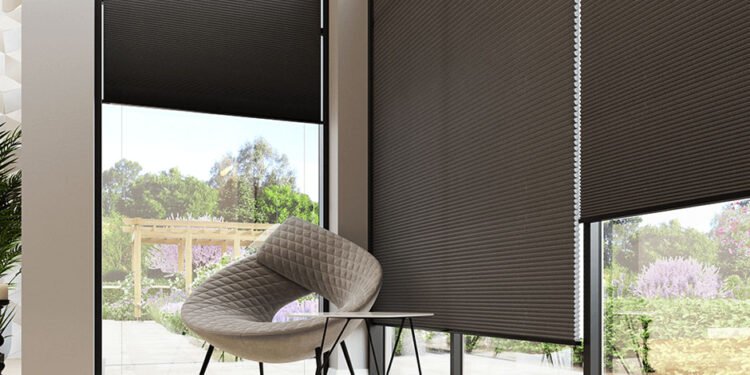As temperatures drop, keeping our homes warm and comfortable becomes a priority. Thermal window coverings, such as curtains to keep cold out, provide a simple yet effective solution. By adding insulation to windows, these coverings help maintain warmth indoors, reduce energy bills, and even provide a soundproofing effect. In this article, we’ll explore the importance of thermal window coverings, how they work, and tips for choosing the best ones for your home.
What Are Thermal Window Coverings?
Thermal window coverings are designed to insulate your home from temperature changes by minimizing heat transfer through windows. These coverings include curtains to keep cold out, cellular shades, and thermal blinds. Constructed from specialized materials, such as thick fabric layers or cellular pockets, they serve as barriers that trap warm air indoors during winter and help block out heat during summer.
The result? A comfortable, temperature-controlled environment without the need to excessively rely on heating or air conditioning. By preventing heat loss and keeping cold drafts at bay, thermal window coverings can make a noticeable difference in both comfort and energy efficiency.
The Benefits of Using Curtains to Keep Cold Out
1. Increased Energy Efficiency
Windows are one of the biggest culprits of heat loss in a home, which is why thermal window coverings are so effective. Insulated curtains can help reduce energy consumption by trapping heat inside, preventing cold air from entering, and reducing the strain on your heating system. With curtains to keep cold out, you can expect up to 25%–30% improvement in energy efficiency, which translates into substantial savings on energy bills during winter months.
2. Enhanced Comfort
There’s nothing quite like a cozy, warm room when it’s cold outside. Thermal window coverings help to block drafts and maintain a steady indoor temperature, enhancing comfort throughout the home. Rooms with proper insulation feel warmer and maintain a consistent temperature, which is particularly beneficial for high-traffic areas such as living rooms and bedrooms.
3. Sound Reduction
Thermal window coverings also offer soundproofing benefits. Thanks to their multi-layered construction, these coverings can absorb sound, reducing noise from outside. This feature is especially helpful for homes located near busy streets or urban areas. The thickness of curtains to keep cold out provides a quieter environment indoors, making it easier to relax and sleep without interruptions.
4. Protection for Furniture and Decor
In addition to their thermal benefits, many of these coverings come with UV-blocking properties. Sunlight, even in winter, can cause fading on furniture, carpets, and flooring. Insulated curtains help block harmful UV rays, protecting your interior furnishings and prolonging their lifespan. This benefit not only keeps your decor looking vibrant but also reduces the need for frequent replacements.
5. Increased Privacy
Thermal curtains are usually thicker and more opaque than standard curtains, which enhances privacy. These curtains to keep cold out offer added protection by keeping interiors shielded from prying eyes, which is especially useful in bedrooms, bathrooms, and living rooms facing neighbors or streets. The privacy provided by thermal window coverings allows you to feel secure and comfortable in your own space.
Types of Thermal Window Coverings
Selecting the right thermal window covering for your home can depend on various factors, from aesthetic preferences to insulation needs. Here are some common types of thermal window coverings:
1. Thermal Curtains
Thermal curtains are thick, layered curtains made with an insulating material like foam or fleece. They provide effective insulation by blocking drafts and trapping warmth inside. Available in various colors, fabrics, and designs, thermal curtains offer a combination of style and functionality, making them a popular choice for many homeowners.
2. Blackout Curtains
While blackout curtains are mainly known for blocking light, their thick, often triple-woven fabric also helps insulate against cold. This makes them an ideal choice for bedrooms, as they not only keep the room dark for better sleep but also maintain warmth. Blackout curtains can be layered with other window treatments to maximize insulation and energy savings.
3. Cellular Shades
Also known as honeycomb shades, cellular shades feature a unique honeycomb structure that traps air within individual cells, providing insulation and reducing heat transfer. They are available in single, double, or triple-cell designs, with the latter offering the highest level of insulation. Cellular shades are ideal for those looking for a modern, minimalist look with energy-saving benefits.
4. Thermal Blinds
Thermal blinds look like traditional blinds but are made from insulating materials. Some even feature a reflective coating to reduce heat loss in winter and block heat in summer. Thermal blinds come in various styles, including Roman, roller, and Venetian, allowing homeowners to achieve an elegant look while keeping their home energy-efficient.
5. Window Films
Thermal window films are applied directly to the glass surface and work by reflecting heat. Although they don’t provide as much insulation as curtains or blinds, they are a cost-effective solution for reducing heat transfer, especially in mild climates. Window films are ideal for homeowners looking for a subtle way to insulate windows without changing their home’s aesthetics.
Choosing the Best Curtains to Keep Cold Out
When shopping for curtains to keep cold out, consider these key factors to ensure optimal insulation and a stylish look:
- Material Thickness: Opt for heavyweight fabrics like velvet, suede, or microfiber with a thermal lining. Thicker materials generally provide better insulation and help keep your home warmer.
- Full Coverage: Choose curtains that are wide and long enough to cover the entire window. Floor-length curtains offer maximum coverage, ensuring that cold air doesn’t sneak in through gaps.
- Multi-Layered Design: Look for curtains with multiple layers, as they provide additional insulation. Some thermal curtains are designed with three or even four layers, making them ideal for particularly cold climates.
- Color and Style: Thermal curtains are available in a variety of colors and patterns, so it’s easy to find options that complement your home decor. Darker colors tend to absorb more heat, which can enhance the insulating effect in winter.
- Ease of Maintenance: Choose curtains that are easy to clean and maintain. Many thermal curtains are machine washable, making it easier to keep them looking fresh over time.
Maximizing the Effectiveness of Thermal Window Coverings
While thermal curtains can make a significant impact on their own, there are a few additional steps you can take to boost their insulating power:
- Layer with Other Curtains or Shades: For added insulation, consider layering thermal curtains with cellular shades or blackout curtains. This not only improves insulation but also allows for flexibility in light control.
- Seal Window Gaps: Properly sealing any gaps around windows with weatherstripping or caulking can prevent drafts from sneaking in, allowing your thermal curtains to work more effectively.
- Keep Curtains Closed: During the coldest parts of the day, keep thermal curtains closed to trap warmth. However, on sunny days, open them to allow natural sunlight to warm your room.
- Install Close to the Wall: Installing curtain rods close to the wall minimizes the gaps between the curtain and the wall, ensuring fewer drafts get through. Consider using wraparound rods to hold the curtains flush against the window frame.
Final Thoughts
Thermal window coverings offer a smart, affordable solution for keeping your home warm during winter and reducing energy costs. By preventing heat loss and keeping cold air out, these coverings not only improve comfort but also contribute to a more sustainable, energy-efficient home. With options ranging from curtains to keep cold out to cellular shades and thermal blinds, there’s a style for every preference and need.












